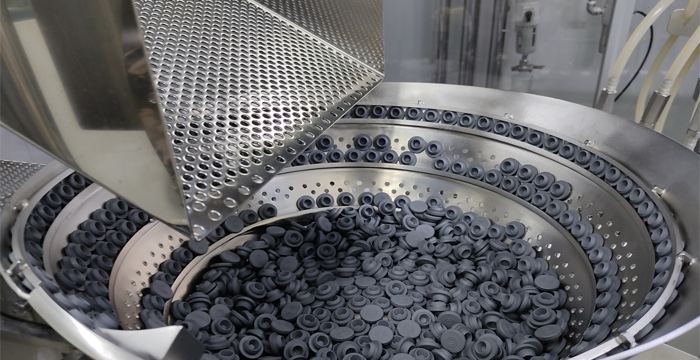Typically used as part of a vial, bottle, or pre-filled syringe package system, elastomeric closures (often referred to as rubber stoppers, plungers, or seals) are made of materials obtained by  vulcanization (cross-linking) polymerization, polyaddition, or polycondensation of macromolecular organic substances (elastomers). Closure formulations contain natural or synthetic elastomers and inorganic and organic additives to aid or control vulcanization, impart physical and chemical properties or color, or stabilize the closure formulation. Due to their unique chemical structure and use typically for injectable medications, qualification test requirements are stringent with no room for interpretation. For example, when it comes to distinction between Type I and Type II closures the USP directive is very specific:
vulcanization (cross-linking) polymerization, polyaddition, or polycondensation of macromolecular organic substances (elastomers). Closure formulations contain natural or synthetic elastomers and inorganic and organic additives to aid or control vulcanization, impart physical and chemical properties or color, or stabilize the closure formulation. Due to their unique chemical structure and use typically for injectable medications, qualification test requirements are stringent with no room for interpretation. For example, when it comes to distinction between Type I and Type II closures the USP directive is very specific:
“This chapter states test limits for Type I and Type II elastomeric closures. Type I closures are typically used for aqueous preparations. Type II closures are typically intended for nonaqueous preparations and are those which, having properties optimized for special uses, may not meet all requirements listed for Type I closures because of physical configuration, material of construction, or both. If a closure fails to meet one or more of the Type I test requirements, but still meets the Type II requirements for the test(s), the closure is assigned a final classification of Type II. All elastomeric closures suitable for use with injectable preparations must comply with either Type I or Type II test limits. However, this specification is not intended to serve as the sole evaluation criteria for the selection of such closures.”
Accurate understanding of these requirements and how to design cGMP qualification test programs specific to rubber stoppers is best completed in collaboration with an experienced team. Defining the test plan for your specific stopper must take into account a number of factors:
- Type of Coating
- Silicone Coating
- Lubricious Coating
- Non-Barrier Coating
- Barrier Coating
- Functional Use of the Elastomer
- Chemical Construction (as provider by elastomer supplier)
- Condition of Use
- Sterilized
- Non-Sterilized
The CS Analytical Team can assist with identifying all relevant testing requirements specific for your elastomer and can perform cGMP testing that ensures your elastomer has data generated to satisfy all USP <381> test requirements.

